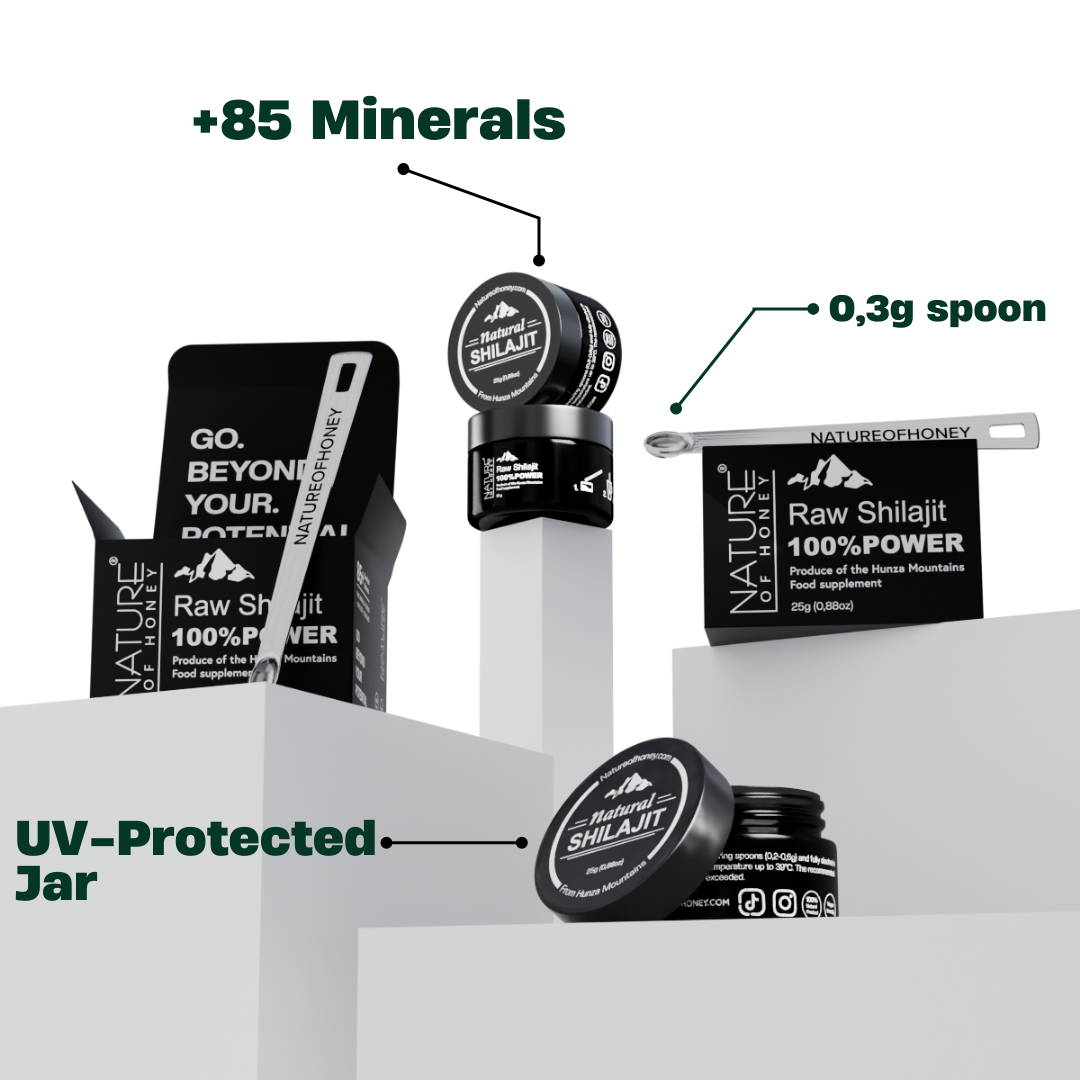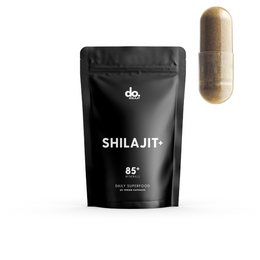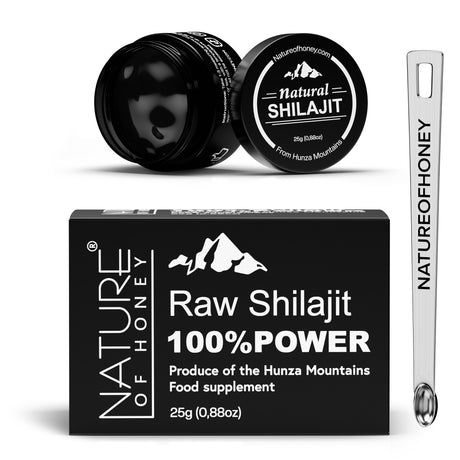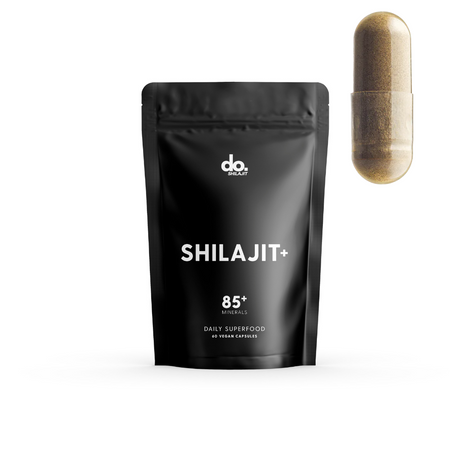Do you need help or guidance?
92% of our customers find answers here frequently asked questions. If, contrary to expectations, your question is not answered, we are ready to help you both before and after your purchase.
You can contact us on contact@natureofhoney.com, in our live chat or our contact form, which we will respond to within 48 hours on weekdays.
Contact us

During sales or promotions, delays may occur. All orders are generally shipped with UPS, DHL, PostNord or Bring and are delivered within 1-3 business days after dispatch from our warehouse. Should it not be sent, it may be because there may be some delays in updating your tracking link - we therefore recommend waiting and seeing until the next day.
Of course, you are always welcome to contact us.
Frequently Asked Questions
Below you will find answers to the most common questions
DoShilajit™ Shilajit is a registered dietary supplement. This unique herbomineral sediment, known as mountain pitch, is harvested deep within the wilderness of high-altitude mountain ranges. Recognized by various names such as mumio (moomiyo), mumie, and asphaltum, Shilajit in its purest form is rich in essential nutrients and minerals.Shilajit has been valued across many cultures for generations. Its long history speaks to its benefits and the richness it offers. Known for boosting vitality and increasing energy levels, Shilajit remains a cherished gift from nature.
✔️ We don't charge over $0.85 per day unlike other brands.
✔️ Our Shilajit Resin lasts for 50-60 days, not just 20-30 days like the ones advertised by others.
✔️ We have NATA-Approved lab tests, instead of supplier-provided lab tests that are from years ago.
✔️ Our Shilajit Resin has minimum 40% Fulvic Acid - not under 30% like other brands.
The shilajit resin may be taken straight or mixed in drink:
1) Take a scoop with the spoon (300 to 600mg)
2) Recommendation is to take shilajit on an empty stomach.
3) Mix in warm water, tea, coffee or any other drink except (Tap Water or Alcohol)4) Take it in the morning or during the day or before sleep. Our Recommendation is to take shilajit on an empty Stomach.
The First Week..
Within the 1st week of using DoShilajit's™ Shilajit containing min. 40% Fulvic Acid, customers may experience a noticeable uplift in energy levels, aiding in the reduction of daily fatigue.
The mental well-being enhancement that can come from Shilajit, becomes apparent, characterized by an improved mood and a clearer state of mind.
The adaptogenic properties of the Shilajit may begin their work, offering the first glimpses of goal-crushing energy levels.
The First Month...
As our customers transition into the first month, the potential benefits can extend to a strengthened immune system and reduced stress levels, thanks to the adaptogenic properties of Shilajit.
For men, it can lead to an increase in "male-levels", that could lead to enhanced vitality and overall wellness.
These potential improvements lay the foundation for an enriched quality of life and enhanced physical and mental resilience
The Second Month...
By the 2nd month, customers may start to witness better physical performance, marked by improved strength and endurance.
The potential youth-restoring effects of Shilajit can become visible; where skin radiance is enhanced, and premature signs of age may begin to diminish.
Plus, sleep quality may improve, which can mean improving your rejuvenation and enhancing energy levels even more..
The Third Month...
The third month can unveil more regeneration, with customers potentially experiencing a noticeable boost in overall health.
The body’s efficiency in absorbing essential minerals may be enhanced, promoting improved bone and muscular health.
Additionally, Shilajit’s role in supporting the body’s natural detox-processes may become obvious, which may mean better internal cleanliness and revitalization.4 Months And Beyond...
In the 4th month and beyond, the cognitive enhancements can become very clear.
Users might experience optimized mental clarity, memory, and cognitive function, where they are in a state of greater focus, more often.
Hormonal balance can be refined, further promoting physical and mental wellness.
The combination of these benefits, can amplify the body’s resilience against chronic problems, which may mark their transformative journey to holistic well-being... initiated by DoShilajit™.
If taking0,5gshilajit everyday, a 25g jar DoShilajit™ will last50-60 days.
DoShilajit™ contains over 85 different minerals in their ionic form, making it a potent source of essential nutrients. Among these minerals, some of the most significant include magnesium, calcium, iron, zinc, copper, and selenium. These minerals contribute to various bodily functions, such as energy production, bone health, muscle function, and immune support. Additionally, DoShilajit™ is rich in fulvic acid, which enhances the bioavailability of these minerals, ensuring optimal absorption and utilization by the body. This unique composition makes DoShilajit™ a valuable supplement for those looking to boost their overall health and well-being.
Shilajit works by delivering a rich blend of nutrients in a form that's easily absorbed by the body. When consumed, they are readily taken up by the body's tissues, enhancing their function and promoting overall well-being. This efficient absorption means that the body can quickly benefit from the nourishing properties of Shilajit, supporting vitality and health.
Shilajit, when sourced authentically and consumed in recommended dosages, is generally considered safe for most individuals. It's always essential to follow the manufacturer's recommendations and instructions to ensure optimal benefits and safety. However, like any supplement, it's essential to ensure you're getting a high-quality product. Low-quality or counterfeit Shilajit products may not offer the same benefits and could have unwanted additives. Always choose a reputable source to ensure you're getting genuine Shilajit. While Shilajit is well-tolerated by many, it's always a good idea to start with a smaller dose and monitor how your body reacts. Some individuals prefer taking it with food to optimize absorption and minimize any potential discomfort.As with any supplement or dietary change, it's recommended to consult with a healthcare professional, especially if you're on medication or have existing health concerns. Listening to your body is crucial; if you notice any unusual symptoms, consider adjusting your intake or seeking expert advice.
DoShilajit™ Shilajit is housed in our premium violet glass jars, chosen for their unique protective properties. These elegant purple containers are more than just visually appealing. Expertly designed to shield against UV light damage, they ensure that the rich nutrient profile of Shilajit remains at its optimal state. This results in a product that retains its potency, offers an extended shelf life, and consistently delivers uncompromised quality. In essence, our packaging isn't just about beauty—it's a promise of purity, potency, and perfection.
Hill, Carol; Forti, Paolo (1997). Cave minerals of the world, Volume 2. National Speleological Society. pp. 217–23. ISBN 978-1-879961-07-4.
Ahmed R. Al-Himaidi, Mohammed Umar (2013). “Safe Use of Salajeet During the Pregnancy of Female Mice”. Journal of Biological Sciences. 3 (8): 681–684. doi:10.3923/jbs.2003.681.684.
Anna Aiello, Ernesto Fattorusso, Marialuisa Menna, Rocco Vitalone, Heinz C. Schröder, Werner E. G. Müller (September 2010). “Mumijo Traditional Medicine: Fossil Deposits from Antarctica (Chemical Composition and Beneficial Bioactivity)”. Evidence-Based Complementary and Alternative Medicine. 2011: 738131. doi:10.1093/ecam/nen072. PMC 3139983Freely accessible. PMID 18996940.
ASh Shakirov: Antimicrobial Action of mumiyah-asil in Connection wih some Pus Causing Microorganism (russisch) In: Materials of the Secound Scientific Conference of the Young Scholar-Physicians of Uzbekistan, pp. 127–128, Tashkent (1966)
ASh Shakirov: Treatment of Infected Wounds by mumiyah. In the Experiment (Russian).In Materials of the Scientific Practical Conference of the Tashkent Advanced Training Institute for Physicians, pp. 58–59, Tashkent (1966)
Benno R. Meyer-Hicken: Über die Herkunft der Mumia genannten Substanzen und ihre Anwendung als Heilmittel. Diss. Fachbereich Medizin, Universität Kiel 1978.
Bucci, Luke R (2000). “Selected herbals and human exercise performance”. The American Journal of Clinical Nutrition. 72 (2 Suppl): 624S–36S. PMID 10919969.
Carl Reichert: Die Mumia nativa oder Muminahi, eine Art prähistorisch-antiseptisches Verbandmittel in Persien. In: Deutsches Archiv für Geschichte der Medicin u. medicinische Geographie 3, 1880; Neudruck Hildesheim und New York 1971; S. 140–145.
David Winston & Steven Maimes. Adaptogens: Herbs for Strength, Stamina, and Stress Relief, Healing Arts Press, 2007. ISBN 978-1-59477-158-3
Faruqi, S.H. 1997, Nature and Origin of Salajit, Hamdard Medicus, Vol XL, April–June, pages 21–30
Frolova, L. N.; Kiseleva, T. L. (1996). “Chemical composition of mumijo and methods for determining its authenticity and quality (a review)”. Pharmaceutical Chemistry Journal. 30 (8): 543–547. doi:10.1007/BF02334644.
Frolova, L. N.; Kiseleva, T. L.; Kolkhir, V. K.; Baginskaya, A. I.; Trumpe, T. E. (1998). “Antitoxic properties of standard dry mumijo extract”. Pharmaceutical Chemistry Journal. 32 (4): 197–199. doi:10.1007/BF02464208.
Gerhard Steinmüller: Perlen der russischen Medizin. 1. Auflg. Stadtdruckerei, Pawlograd, Ukraine 1993, S. 11–13.
Ghosal, S., B. Mukherjee and S. K. Bhattacharya. 1995. Ind. Journal of Indg. Med. 17(1): 1–11.
Ghosal, S.; Reddy, J. P.; Lal, V. K. (1976). “Shilajit I: Chemical constituents”. Journal of Pharmaceutical Sciences. 65 (5): 772–3. doi:10.1002/jps.2600650545. PMID 932958.
Hill, Carol A.; Forti, Paolo (1997). Cave minerals of the world. 2 (2nd ed.). National Speleological Society. p. 223. ISBN 978-1-879961-07-4.
http://www.bgr.bund.de/DE/Themen/Sammlungen-Grundlagen/GG_Sammlungen/Objekt_Monat/1004_mumiyo.html
Igor Schepetkin, Andrei Khlebnikov, Byoung Se Kwon, Medical drugs from humus matter: Focus on mumijo [3]
Joshi, G. C., K. C. Tiwari, N. K. Pande and G. Pande. 1994. Bryophytes, the source of the origin of Shilajit – a new hypothesis. B.M.E.B.R. 15(1–4): 106–111.
Jürgen Bause: Gesundheit aus den Bergen Asiens. Wissenschaftsverlag Ulm, 2007, ISBN 978-3-9811471-0-0.
Kiseleva, T. L.; Frolova, L. N.; Baratova, L. A.; Baibakova, G. V.; Ksenofontov, A. L. (1998). “Study of the amino acid fraction of dry mumijo extract”. Pharmaceutical Chemistry Journal. 32 (2): 103–108. doi:10.1007/BF02464176.
Kiseleva, T. L.; Frolova, L. N.; Baratova, L. A.; Ivanova, O. Yu.; Domnina, L. V.; Fetisova, E. K.; Pletyushkina, O. Yu. (1996). “Effect of mumijo on the morphology and directional migration of fibroblastoid and epithelial cellsin vitro”. Pharmaceutical Chemistry Journal. 30 (5): 337–338. doi:10.1007/BF02333977.
Kiseleva, T. L.; Frolova, L. N.; Baratova, L. A.; Yus’Kovich, A. K. (1996). “HPLC study of fatty-acid components of dry mumijo extract”. Pharmaceutical Chemistry Journal. 30 (6): 421–423. doi:10.1007/BF02219332.
Kizaibek, Murat (2013). “Research advances of Tasmayi”. Zhongguo Zhong Yao Za Zhi. 38 (3): 443–448. doi:10.4268/cjcmm20130331.
Lal, VK; Panday, KK; Kapoor, ML (1988). “LITERARY SUPPORT TO THE VEGETABLE ORIGIN OF SHILAJIT” (PDF). Ancient Science of Life,. 7: 145–8. PMC 3336633Freely accessible. PMID 22557605.
Robert Talbert – SHILAJIT – a materia medica monograph – California College of Ayurveda „Shilajit”, 2004
S. Ghosal, J. Lal, Sushil Singh: The core structure of shilajit humus. Soil bio.biochem.Vol 23, No.7, 673-80 (1991)
S. Ghosal, Reddy Lal, J.P. Shilajit I: Chemical Constituents J. pharm Sci., pp 772–773 (1976)
S. Ghosal, S. Singh, R. Srivastava: Shilajit II: Biphenyl-metabolites form Trifolium repens. J.Chem. Research pp 196–197 (1988)
S. Ghosal: Shilajit VII: Chemistry of shilajit, an immunmodulatory ayurvedic rasayan. Pure Appl. Chem., Vol 62, No.7,pp 1285–1288 (1990)
Schepetkin, Igor; Khlebnikov, Andrei; Kwon, Byoung Se (2002). “Medical drugs from humus matter: Focus on mumie”. Drug Development Research. 57 (3): 140–159. doi:10.1002/ddr.10058.
Schepetkin, Igor; Khlebnikov, Andrei; Kwon, Byoung Se (2002). “Medical drugs from humus matter: Focus on mumie”. Drug Development Research. 57 (3): 140–159. doi:10.1002/ddr.10058.
Shamarpa Rinpoche: Sangye Menla, approche spirituelle de la médecine tibétaine. Traduction de Jérome Edou, 47 p.Ed. Dhagpo Kagyu-Ling Montignac (1982)
Shibnath Ghosal (January 2009). “Chemistry of shilajit, an immunomodulatory Ayurvedic rasayan”. Pure and Applied Chemistry. 62 (7): 1285–1288. doi:10.1351/pac199062071285.
The antioxidant – genoprotective mechanism of the preparation Mumijo-Vitas [2]
Wilson, Eugene; Rajamanickam, G. Victor; Dubey, G. Prasad; Klose, Petra; Musial, Frauke; Saha, F. Joyonto; Rampp, Thomas; Michalsen, Andreas; Dobos, Gustav J. (June 2011). “Review on shilajit used in traditional Indian medicine”. Journal of Ethnopharmacology. 136 (1): 1–9. doi:10.1016/j.jep.2011.04.033. PMID 21530631.
Winston, David; Maimes, Steven (2007). “Shilajit”. Adaptogens: Herbs for Strength, Stamina, and Stress Relief. Inner Traditions / Bear & Company. pp. 201–204. ISBN 978-1-59477-969-5. Retrieved November 29, 2010.
Wolfgang Windmann: Mumijo- Das schwarze Gold des Himalaja. Windpferd-Verlag, 2005, ISBN 978-3-89385-475-2.
Yarovaya, Sofiya Alekseevna – Medical preparations based on Mumijo [1]
Zahler, P; Karin, A (1998). “Origin of the floristic components of Salajit”. Hamdard Medicus. 41 (2): 6–8.
Other links:
- in the EU: EFSA (European Food Safety Authority),
- in the US: NCBI (National Center for Biotechnology Information)
Other medical studies in the US: NaturalNews. America’s Truth News Bureau
Medical studies in the rest of the world: http://www.hindawi.com/journals/ijad/2012/674142/citations/
 SHILAJIT PREMIUM
SHILAJIT PREMIUM
 SHILAJIT PREMIUM CAPSULES
SHILAJIT PREMIUM CAPSULES
 SHILAJIT PREMIUM
SHILAJIT PREMIUM
 SHILAJIT PREMIUM CAPSULES
SHILAJIT PREMIUM CAPSULES